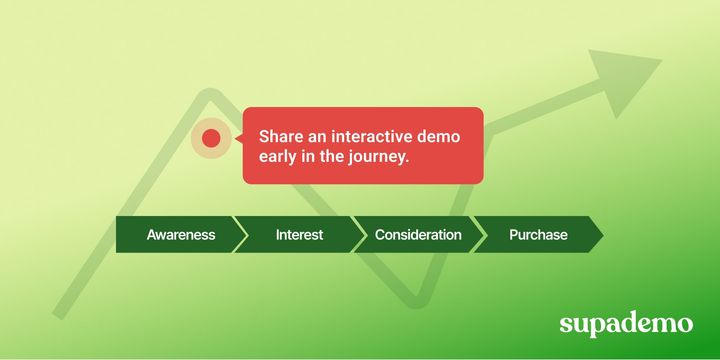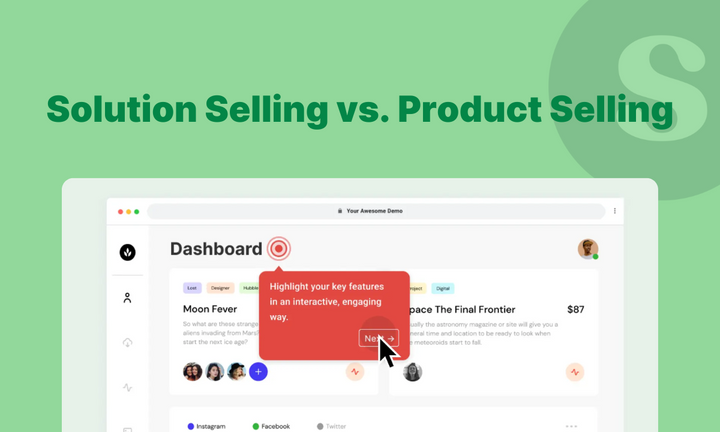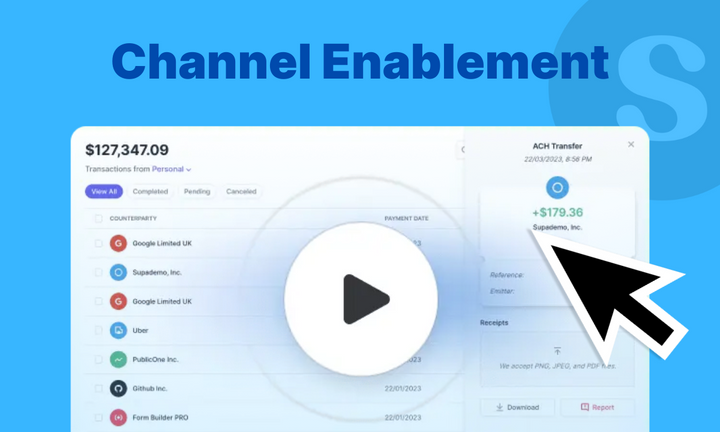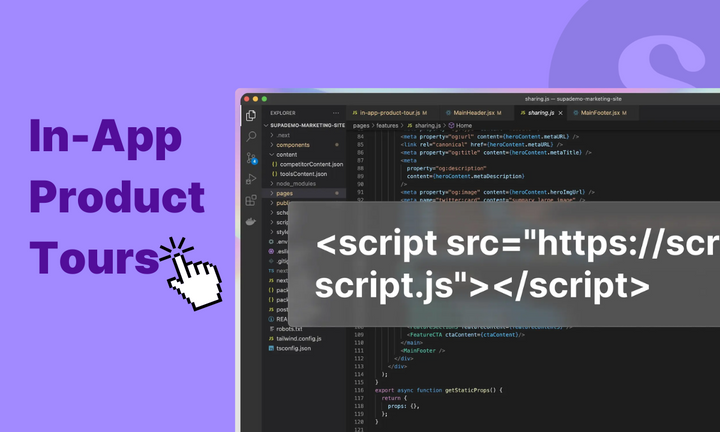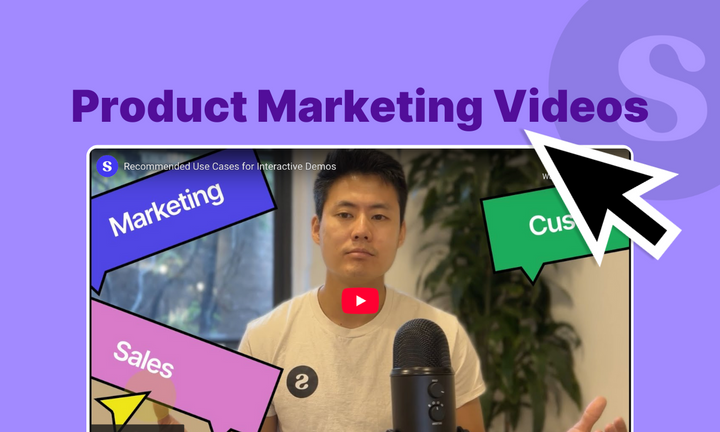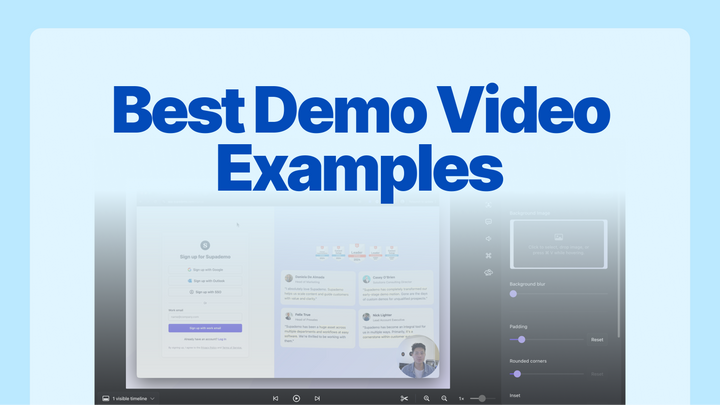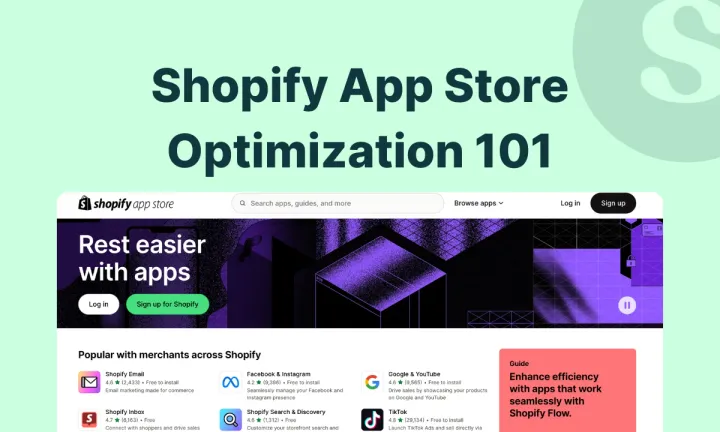In today's product-led-growth era, potential buyers have a lot of information at their disposal – even before they interact with your product. These aware shoppers often read in-depth guides, browse review websites, and talk to their peers to collect feedback.
While they have access to whatever they want to know at their fingertips, there are a few challenges with a fully buyer-led, asynchronous purchasing process:
- Much of the content available is outdated and biased.
- The reviews and feedback fail to depict the tool's use cases.
- It's time-consuming and difficult to surface accurate information.
Solving these challenges by being transparent, clear, and engaging during the sales process is key. And one of the best ways to do this is to offer interactive product demos early in the sales journey.
This article will discuss the benefits of using demo software and share tips on how to create effective product demos using interactive demos.
First, let's look at what interactive product demonstrations are and how they work.
What are interactive product demos?
Interactive product demos are step-by-step, guided walkthroughs that showcase the product's features and benefits in real-time. Unlike static presentations or guides, interactive demos let users click prompts to explore your product's features instantly.
Notion, a project management software, recently launched a new app, Notion Calendar. If they had to quickly showcase how the application works at a high level, here's how it could look.
Experience how by clicking on various hotspots you can walk through the tool’s interface, navigational links, and features.
Now, let’s jump into why sharing interactive product demos early and often leads to trust and higher conversions in the sales journey:
1. Brings clarity and transparency in communication
Showcasing your interactive product demo during cold outreach or outbound leads can leave a lasting impression on prospects. Instead of being forced to click around on your website, the prospect can explore your product through a direct link in your email, without paying or signing up for a free trial.
Aside from being an immediate way to drive home your product's "Aha moment", an interactive demo works as it shows your confidence in your product and willingness to be transparent early in the process. By doing so, you build trust and rapport with the potential prospect.
This not only works in cold outbound but across early stage sales conversations, enablement, and within customer success or onboarding.
2. Accelerates buying cycles through visual demonstration
By sharing engaging product demos early on, sellers can tap into cognitive and emotional triggers throughout the buying process.
Cognition trigger
Product demos emulate hands-on walkthroughs of the actual product's features and benefits, helping visually illustrate your product's use cases in an interactive way. Unlike a product video demo – which is a one-way spewing of information you want the prospect to absorb – interactive demos promote learning by doing, making it easier
Psychologically, visual walkthroughs help reinforce cognifitive retention, making it stick around longer within the buyer's long term memory. As a result, buyers will be able to recall key information faster and more effectively, turning them into more active purchasers and champions.
Emotional triggers
In the same way social proof builds trust and propels users to buy, interactive demos work as visual proof. Buyers can see the solution to their challenges in real-time. These demonstrations evoke positive emotions as it eliminates buyers' skepticism by answering their "what-ifs".
Moreover, interactive demos offer a more frictionless buying experience to the buyer. Sharing demos early in the sales process helps reduce common questions or areas of concern – helping sellers focus their efforts behind relationship building and demonstrating ROI. This process further increases their trust and makes them confident in their buying decision.
In contrast, when you rely on static, written guides, long videos, or self-serve content to buyers, you leave your products features and benefits open to interpretation by the buyer. This increases their workload, resulting in higher drop-offs. With interactive demos, you become the personal guide and help ease the burden, friction, and workload from your buyers:

3. Engaged conversations: Giving context before the demo calls
By providing buyers with targeted product demos before sales calls, they can explore your products at their own pace and understand how they can solve their specific pain points. This can lead to more meaningful conversations with buyers and a higher chance of closing deals.
In fact, Gartner found interesting data points in its report on the B2B buying journey. When the information offered helps buyers make a buying decision, they're 2.8x more likely to experience a great buying experience and 3x more likely to buy a larger deal. That's exactly one of the benefits interactive demos offer when shared early and often throughout the buyer journey.

3 tips for leveraging interactive product demos
First of all, your interactive product demo should be concise, persuasive, and appealing to engage buyers and drive conversions.
After reviewing over 20,000 interactive demos created by customers on Supademo, here are several key traits we noticed across successful demos:
- Keep your hotspots on-brand to align your demos with your brand image and voice.
- Keep demos short under 6 touch points to reduce drop-offs.
- Keep your guiding text benefit-focused and not features-focused.
More transparency → Increased trust and conversions
Nowadays, your target prospect is already trying to find the best solution for their use case, so their buying intent is higher than ever before.
By using early-stage interactive demos, you can offer a real-time, less time-consuming overview of your product. This demo builds trust during the consideration stage as you're being upfront, clear, and transparent. Such transparency gives your company a competitive advantage, bringing in more leads and helping close more deals.
Mark Kosoglow, CRO at Crystal Software, said in Drift's B2B buying guide, "If a salesperson has my trust and attention, he'll usually stick with them."
So, the earlier you build and strengthen trust with your buyers, the more conversions you'll ultimately generate for your business.
Try Supademo for Product Demos
One of the main hesitations with sharing product demos early in the sales funnel is the perceived workload and time it takes to create a high-fidelity demo. Luckily, Supademo helps anyone create beautiful interactive demos in just a few minutes. With features like synthetic AI voiceovers, automatic step text, and one-click personalizations, Supademo makes it easy to share product demos early in the sales journey.
Start creating Supademos for free without a credit card by clicking here.



